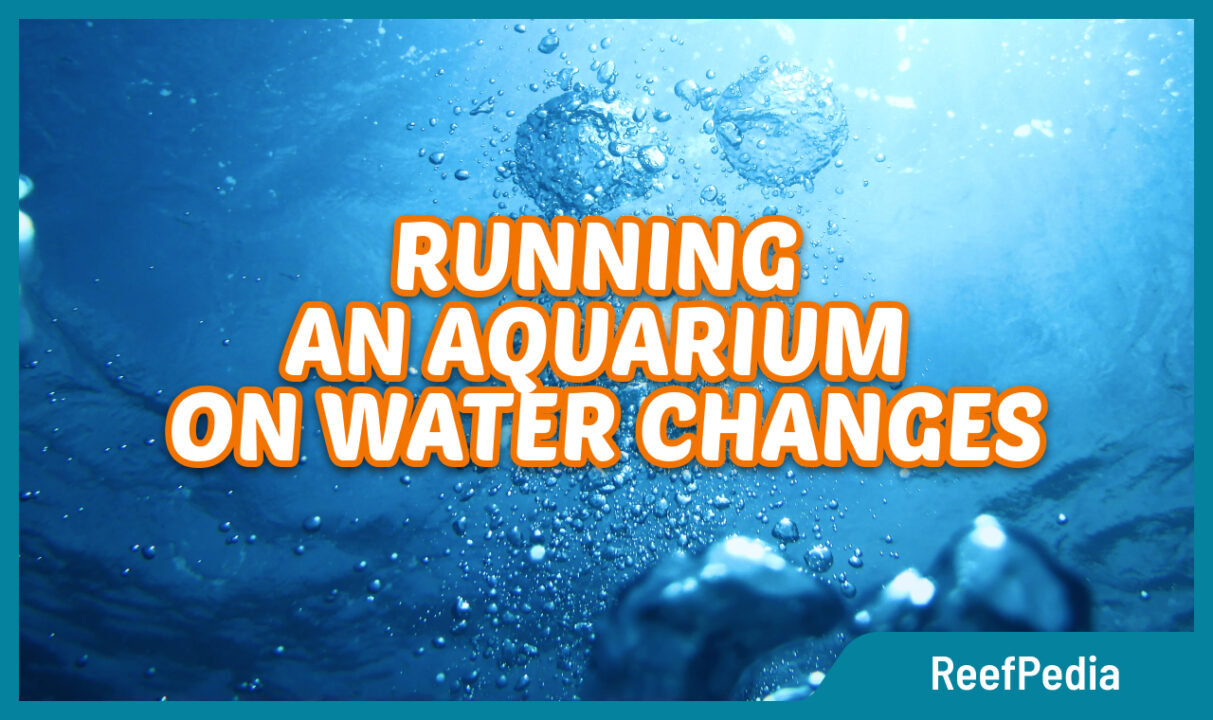The issue of keeping an aquarium on water changes constantly comes up in discussions on Social Reef and in themed Facebook groups. The question asked most often by aquarists is: what are these water changes actually for?
Technical innovations have appeared on the market – more efficient skimmers, filters with automatic rollers, ICP analyses. All these products have attracted the interest of marine aquarists.
Thanks to these technical developments, aquarium maintenance, including the control of water quality and, in fact, the entire marine aquarium environment, has been greatly improved.
Nowadays, more and more demanding corals can be successfully kept in marine aquariums.
However, the technical innovations described above do not only bring advantages, but also dangers that not everyone is aware of. Many aquarists believe that, thanks to modern aquarium technology and controlled laboratory tests of the marine aquarium water, regular water changes are no longer necessary.
One can guess that water changes are not amongst the most fullfilling task, as they not only involve costs, but also effort and time.
Aquarium salt
Marine aquarium salt is a chemically pure salt mixture, created to replicate natural seawater. It is specifically formulated for the reef environment and provides optimum concentrations of magnesium, calcium, strontium and the correct levels of alkalinity and pH in reef aquarium systems. The salt contains all the essential primary, secondary and trace components found in natural marine waters, while being free of toxic and non-essential components such as nitrates, phosphates, silicates, arsenic, cadmium or beryllium. Reef salt should be perfectly mixed. This process may require mixing for as long as 24 to 48 hours.
Benefits of performing water changes
Toxins and undesirable substances accumulate in the water, for example excess micro- and macro-elements, rust from rotors and other metal components (most often they’re detected in an ICP-OES analysys). The abovementioned substances can cause disease in your marine animals. Regular ICP tests can indicate overdoses and contaminants in the water and in such cases water changes are really useful and important.
Water changes in saltwater aquariums are also of considerable importance in terms of supplying the aquarium with the necessary minerals and trace elements, required for the proper growth of corals.
Two types of water changes can be distinguished according to their purpose.
The first type is the regular water change, approximately 10% per week. This maintains a stable level of minerals in the water and removes overruns. This is a process that brings the water up to the level of natural seawater. Of course, water changes alone may not be enough to provide the right amount of minerals.
The second type of water change is an emergency water change. This is performed when overdoses and contaminants are detected in an ICP test. In such cases, 15-20% of the aquarium’s water volume is changed – this should be done as many times as necessary to get rid of unwanted overdoses or pollutants in the water.
Prepare fresh water in advance
Adding fresh water to an already existing environment can come as a bit of a shock to its inhabitants, so mix fresh salt water taking into account the current chemical concentration of the water in the tank. In this way, you will make sure that the aquarium inhabitants have the right conditions. The key parameters are salinity, temperature and pH of the water. Of course, going lower, we need to determine whether we do water changes on salt with similar parameters to those in the tank, or whether we give a rich brine that will increase the parameters. For the pros and cons of whether to use brine with similar parameters or a much richer salt, see the dedicated article on ReefPedia.
Never use tap water
Another tip for water changes in a marine aquarium is not to use tap water as the basis for mixing a new brine. Tap water, while mostly safe for traditional domestic use, contains many substances that can adversely affect the purity of the brine. Tap water contains minerals, silicates and many other elements. When making a brine, we need a pure base. If we mix tap water with salt for a marine aquarium, we may find that some parameter’s been exceeded. It’s not worth spontaneously introducing minerals or other elements into the marine aquarium.
Check the temperature and salinity
Before changing the water, check the salinity and the final salinity. Remember that salinity changes with temperature fluctuations. The temperature and salinity should be the same as in the aquarium.
Summary
In order to keep an aquarium without water changes, it is important to ensure that the mineral supply is adequate and that there are no overruns or impurities in the water. For beginners, it is advisable to do water changes. When the aquarium is ready and the aquarist has gained more knowledge, he/she can try to reduce the number of water changes.
About the author

Damian Krawczuk
I've had freshwater tanks for a long time, but saltwater aquariums have always fascinated me. At one point I decided that I'd set up a small 50 L cube and I've already been in this hobby for 5 years, spending most of my free time developing my knowledge and skills. Now I managed to combine my hobby with work and I'm super happy.
What I value the most in marine aquaristics is the diversity of species and behavior of animals, even the smallest ones, which can be observed, for example, at night, after a hard day at work. Nothing is as relaxing as staring at a tank teeming with life.

